What is Narrative Exposure Therapy (NET)?
Narrative Exposure Therapy (NET) is a short-term, evidence-based intervention designed specifically for the treatment of trauma-related mental health conditions, particularly those resulting from multiple or complex traumatic experiences. Developed in the early 2000s, NET combines elements of cognitive-behavioral therapy, testimony therapy, and exposure therapy within a coherent narrative approach.
At its core, NET involves the construction of a chronological narrative of the client’s entire life, with a particular focus on traumatic experiences. This process allows for the contextualizing of traumatic memories within the broader life story, facilitating emotional processing and cognitive restructuring.
The therapy is unique in its ability to address multiple traumatic experiences efficiently, making it particularly suitable for individuals who have lived through war, conflict, or repeated abuse. NET aims not only to reduce symptoms of post-traumatic stress disorder (PTSD) but also to restore dignity and self-respect to trauma survivors.
Who Created Narrative Exposure Therapy?
Narrative Exposure Therapy was developed by Maggie Schauer, Frank Neuner, and Thomas Elbert in the early 2000s. These three researchers and clinicians were working with refugees and asylum seekers who had experienced multiple traumatic events, often in the context of war or political violence.
Dr. Maggie Schauer is a clinical psychologist and psychotraumatologist. She is the Director of the Center of Excellence for Psychotraumatology at the University of Konstanz, Germany. Her work has focused on the psychological consequences of war, torture, and organized violence, particularly on women and children.
Dr. Frank Neuner is a Professor of Clinical Psychology and Psychotherapy at Bielefeld University, Germany. His research interests include the development and evaluation of psychological treatments for trauma-related disorders, particularly in post-conflict settings.
Dr. Thomas Elbert is a Professor of Clinical Psychology and Neuropsychology at the University of Konstanz. His work spans neuroscience, clinical psychology, and global mental health, with a particular focus on the effects of traumatic stress on brain function and behavior.
The development of NET was driven by the need for an effective, culturally sensitive, and efficient treatment approach for individuals who had experienced multiple traumatic events. Traditional exposure therapies, which typically focus on a single traumatic event, were often insufficient for this population.
How Was Narrative Exposure Therapy Developed?
The development of Narrative Exposure Therapy was a response to the complex needs of trauma survivors in diverse global contexts. Key milestones in its development include:
Late 1990s: Schauer, Neuner, and Elbert begin working with refugees and asylum seekers in Germany, recognizing the limitations of existing trauma therapies for this population.
2002: The first pilot studies of NET are conducted with Sudanese refugees in Uganda, demonstrating promising results.
2004: The first comprehensive manual for NET is published, outlining the treatment approach in detail.
2005: A randomized controlled trial of NET with Rwandan and Somali refugees is published, providing strong evidence for its effectiveness.
2011: An adapted version of NET for children and adolescents (KIDNET) is developed and tested.
2015: NET is recognized by the World Health Organization (WHO) as an evidence-based treatment for PTSD in its guidelines for stress-related disorders.
The development of NET was influenced by several factors:
- The global increase in refugee populations and the recognition of the mental health needs of this group.
- Advances in understanding of the neurobiology of trauma, particularly the role of memory fragmentation in PTSD.
- The need for culturally adaptable interventions that could be used in diverse settings, including low-resource environments.
- Growing recognition of the limitations of Western-centric mental health approaches in global contexts.
- The influence of testimony therapy, which had been used in human rights contexts to document atrocities and promote healing.
What Are the Core Assumptions and Tenets of Narrative Exposure Therapy?
Narrative Exposure Therapy is built on several key assumptions and principles:
- Fragmented Trauma Memories: NET assumes that traumatic memories are stored in a fragmented, non-contextual manner, contributing to PTSD symptoms.
- Narrative as Healing: The process of creating a coherent narrative is seen as therapeutic, helping to integrate fragmented memories into autobiographical memory.
- Exposure as Essential: NET posits that exposure to traumatic memories is necessary for emotional processing and symptom reduction.
- Life Context Matters: Traumatic experiences are understood within the context of a person’s entire life story, not as isolated events.
- Testimony and Witnessing: The act of bearing witness to one’s experiences is seen as important for personal healing and potentially for social justice.
- Cultural Adaptability: NET is designed to be culturally flexible, applicable across diverse populations and contexts.
- Brief but Comprehensive: The therapy aims to address multiple traumas efficiently within a relatively short time frame.
- Empowerment: NET seeks to restore dignity and agency to trauma survivors, viewing them as active participants in their healing process.
- Neurobiology of Trauma: The approach is grounded in neurobiological understandings of how trauma affects memory and emotion processing.
- Dual Representation of Memory: NET works with both “hot” (sensory, emotional) and “cold” (factual, contextual) memory systems to promote integration.
Is Narrative Exposure Therapy Evidence-Based?
Narrative Exposure Therapy has a strong and growing evidence base supporting its effectiveness, particularly for complex trauma and PTSD. Here’s an overview of the current state of evidence:
- Randomized Controlled Trials (RCTs): Multiple RCTs have demonstrated the efficacy of NET in reducing PTSD symptoms across diverse populations, including refugees, former child soldiers, and survivors of domestic violence.
- Meta-Analyses: Several meta-analyses have shown NET to be effective, with medium to large effect sizes for PTSD symptom reduction.
- Long-Term Follow-Up Studies: Studies have shown that the benefits of NET are maintained over time, with some showing continued improvement even years after treatment.
- Comparative Studies: NET has been found to be as effective or more effective than other established trauma treatments in several comparative studies.
- Cultural Adaptability: Research has demonstrated the effectiveness of NET across various cultural contexts, from African refugee camps to European clinical settings.
- Neurobiological Studies: Some studies have shown changes in stress-related biological markers following NET, supporting its neurobiological rationale.
- Cost-Effectiveness: Studies have indicated that NET is a cost-effective intervention, particularly in resource-limited settings.
- Child and Adolescent Populations: Research on KIDNET (the adaptation for younger populations) has shown promising results for traumatized children and adolescents.
While the evidence base for NET is strong, particularly for complex trauma in diverse populations, ongoing research continues to refine our understanding of its mechanisms of action and optimal implementation.
What Psychotherapy Models is Narrative Exposure Therapy Similar To?
Narrative Exposure Therapy shares theoretical and practical similarities with several other psychotherapy models:
- Prolonged Exposure Therapy: Like NET, this approach involves systematic exposure to traumatic memories, though NET contextualizes this within a life narrative.
- Cognitive Processing Therapy: Both therapies aim to modify trauma-related beliefs and integrate traumatic experiences, though NET places more emphasis on narrative construction.
- Testimony Therapy: NET draws on the tradition of testimony therapy used in human rights contexts, though it adds more structured therapeutic elements.
- Life Review Therapy: Both approaches involve reviewing one’s entire life story, though NET focuses more specifically on traumatic experiences.
- Cognitive-Behavioral Therapy (CBT): NET incorporates cognitive and behavioral elements within its narrative framework.
- Eye Movement Desensitization and Reprocessing (EMDR): Both therapies aim to process traumatic memories, though they use different techniques to achieve this.
- Narrative Therapy: While not directly related, both approaches emphasize the importance of personal narratives in shaping experience and identity.
- Trauma-Focused CBT: Both are short-term, structured approaches for addressing trauma, though NET is more specifically designed for complex trauma.
- Autobiographical Memory-Based Approaches: NET shares with these approaches a focus on integrating traumatic experiences into one’s life story.
- Emotional Processing Therapy: Both emphasize the importance of accessing and processing emotions associated with traumatic experiences.
How Does Narrative Exposure Therapy Conceptualize Trauma, Memory, and Identity?
Narrative Exposure Therapy offers unique perspectives on trauma, memory, and identity:
Trauma
In NET, trauma is viewed as an experience that overwhelms normal coping mechanisms and disrupts the integration of sensory, emotional, and cognitive information. Traumatic experiences are seen as creating “fear networks” in the brain, which are activated by reminders of the trauma and contribute to PTSD symptoms.
NET recognizes both single-incident traumas and complex trauma resulting from multiple or prolonged traumatic experiences. It emphasizes that the impact of trauma is influenced by both the nature of the events and the broader life context in which they occur.
Memory
NET draws on a dual representation theory of memory for traumatic events:
- “Hot” Memory: This includes sensory-perceptual and emotional elements of the traumatic experience, which are often vivid but fragmented.
- “Cold” Memory: This refers to the factual, contextual aspects of the event, including its place in time and in relation to other life events.
NET posits that PTSD results from a failure to integrate these two memory systems. The therapy aims to facilitate this integration through the construction of a coherent narrative.
The approach also emphasizes the importance of autobiographical memory – the story we tell about our lives. Traumatic experiences are seen as disrupting the normal flow of this life narrative, and NET seeks to restore coherence to this story.
Identity
In NET, identity is viewed as intimately connected to one’s life narrative. Traumatic experiences, especially repeated or prolonged trauma, can fundamentally disrupt one’s sense of self and place in the world.
The therapy aims to restore a sense of personal identity and continuity by:
- Contextualizing traumatic experiences within the broader life story
- Acknowledging the impact of trauma while also recognizing resilience and survival
- Creating a coherent narrative that spans past, present, and future
- Restoring a sense of dignity and agency through the act of bearing witness to one’s own story
NET recognizes that for many trauma survivors, especially those who have experienced human rights violations or collective violence, healing involves not just personal recovery but also reconnection with community and restoration of social identity.
What Are the Interventions and Techniques Used in Narrative Exposure Therapy?
Narrative Exposure Therapy employs a structured set of interventions and techniques, focused on constructing a coherent narrative of the client’s life with a particular emphasis on traumatic experiences. Here are the key interventions:
1. Psychoeducation
- Educating the client about trauma, its effects, and the rationale for NET
- Explaining the concept of the “fear network” and how NET aims to modify it
2. Lifeline Exercise
- Using a rope or line to represent the client’s life from birth to present
- Placing flowers on the line to represent positive events and stones for negative or traumatic events
- Providing an overview of the life course and identifying key experiences for further exploration
3. Chronological Narration
- Guiding the client through a detailed, chronological retelling of their life story
- Focusing on both traumatic and positive experiences
- Encouraging the inclusion of sensory, emotional, and cognitive details
4. Exposure to Traumatic Memories
- Facilitating prolonged, detailed exposure to each traumatic event
- Encouraging the client to recount the trauma in the present tense, as if reliving it
- Paying attention to sensory details, thoughts, and emotions associated with the trauma
5. Cognitive Restructuring
- Identifying and addressing trauma-related cognitions as they arise in the narrative
- Helping the client develop more balanced, realistic perspectives on the traumatic events and their implications
6. Emotional Processing
- Encouraging the expression and processing of emotions associated with traumatic experiences
- Using techniques to manage emotional arousal during exposure (e.g., grounding techniques)
7. Contextualizing Traumatic Experiences
- Helping the client place traumatic events within the context of their broader life story
- Exploring the meaning of these events in relation to the client’s sense of self and world view
8. Recording the Narrative
- Documenting the client’s narrative in written form during each session
- Reading back the narrative at the beginning of the next session for continuation and elaboration
9. Creating a Testimony
- Compiling the complete written narrative into a cohesive document
- Presenting the final testimony to the client at the end of treatment
10. Body-Focused Interventions
- Incorporating awareness of physical sensations associated with traumatic memories
- Using body-focused techniques to manage arousal and ground the client during exposure
11. Imagery Techniques
- Using guided imagery to enhance exposure and processing of traumatic memories
- Employing imagery rescripting techniques when appropriate
12. Future-Oriented Exercises
- Encouraging the client to extend their narrative into the future
- Exploring hopes, goals, and potential challenges in the post-treatment period
13. Ritual and Symbolic Acts
- Incorporating culturally appropriate rituals or symbolic acts to mark the completion of the narrative or the processing of specific traumas
14. Social Acknowledgment
- When appropriate and desired by the client, facilitating ways for the client’s story to be acknowledged socially (e.g., sharing with family, community events)
15. Relapse Prevention
- Developing strategies for managing trauma reminders and PTSD symptoms post-treatment
- Identifying resources and support systems for ongoing healing
These interventions are applied flexibly within the overall structure of NET, with the chronological narration forming the core of the treatment. The therapist’s role is to guide this process, facilitating exposure and processing while maintaining a supportive, empathic stance.
What Are the Goals and Stages of Treatment in Narrative Exposure Therapy?
Narrative Exposure Therapy is typically a short-term treatment, usually comprising 8-12 sessions, though this can be adjusted based on the complexity of the trauma history. The goals and stages of treatment are as follows:
Overall Goals of NET:
- Reduce symptoms of PTSD and other trauma-related disorders
- Create a coherent narrative of the client’s life, including traumatic experiences
- Integrate fragmented traumatic memories into autobiographical memory
- Restore a sense of personal identity and continuity
- Empower the client through the act of bearing witness to their own story
- Improve overall psychological functioning and quality of life
Stages of Treatment:
1. Preparation and Psychoeducation (Usually 1 session)
- Explain the rationale and process of NET
- Provide psychoeducation about trauma and its effects
- Obtain informed consent for treatment
2. Lifeline Exercise (Usually 1 session)
- Create a visual representation of the client’s life course
- Identify key positive and negative life events
- Provide an overview of experiences to be addressed in therapy
3. Narrative Construction (Multiple sessions)
- Begin chronological narration from birth
- Address each traumatic event in detail as it arises in the life story
- Facilitate exposure to traumatic memories
- Process associated emotions and cognitions
- Contextualize traumatic experiences within the life narrative
4. Addressing the “Hot Spots” (Integrated into narrative construction)
- Focus on moments of highest emotional intensity within traumatic memories
- Facilitate prolonged exposure to these “hot spots”
- Promote emotional processing and cognitive restructuring
5. Integrating the Narrative (Ongoing throughout treatment)
- Read back the evolving written narrative at the start of each session
- Allow for elaboration and correction of the narrative
- Facilitate the integration of fragmented memories into a coherent story
6. Building Resilience and Future Orientation (Usually in later sessions)
- Identify and reinforce sources of strength and resilience in the client’s story
- Encourage exploration of future hopes and goals
- Address potential future challenges and coping strategies
7. Completing the Testimony (Final sessions)
- Finalize the written narrative
- Present the complete testimony to the client
- Process the experience of creating and receiving the testimony
8. Closure and Follow-up (Final session and post-treatment)
- Review treatment progress and gains
- Develop relapse prevention strategies
- Plan for any needed follow-up or additional support
It’s important to note that while these stages are presented sequentially, the process of NET is often more fluid. The chronological narration forms the backbone of the treatment, with other elements (such as processing “hot spots” or building resilience) integrated as appropriate throughout the course of therapy.
The pace and emphasis of treatment are tailored to each individual client’s needs, trauma history, and cultural background. The therapist must be sensitive to the client’s emotional state and capacity for processing traumatic memories, adjusting the intensity and duration of exposure as needed.
In What Contexts is Narrative Exposure Therapy Usually Practiced?
Narrative Exposure Therapy is utilized in a variety of contexts, particularly those dealing with populations exposed to multiple or complex traumas. Common settings include:
- Refugee and Asylum Seeker Services: NET was originally developed for this population and continues to be widely used in refugee camps, asylum centers, and resettlement programs.
- Post-Conflict Zones: In areas recovering from war or civil unrest, NET is often employed as part of community healing and reconciliation efforts.
- Humanitarian Aid Settings: Organizations providing mental health support in disaster-affected areas or conflict zones frequently use NET.
- Veterans’ Services: NET has been adapted for use with military veterans dealing with combat-related PTSD.
- Domestic Violence and Sexual Assault Centers: The therapy’s ability to address multiple traumas makes it suitable for survivors of ongoing abuse.
- Child and Adolescent Trauma Services: The KIDNET adaptation is used in various settings working with traumatized youth.
- Human Rights Organizations: Some organizations use NET not only for healing but also to document human rights abuses.
- Cultural Trauma Healing: NET has been used in programs addressing historical and cultural traumas in indigenous and minority communities.
- Specialized Trauma Clinics: Many trauma-focused mental health clinics offer NET as part of their treatment repertoire.
- Global Mental Health Initiatives: NET’s cultural adaptability makes it a popular choice for international mental health programs.
What is Unique and Different About Narrative Exposure Therapy?
Narrative Exposure Therapy stands out in several ways:
- Life Narrative Approach: Unlike many trauma therapies that focus on specific traumatic events, NET constructs a narrative of the entire life course.
- Cultural Flexibility: NET was designed to be applicable across diverse cultural contexts, making it uniquely suited for global mental health efforts.
- Dual Focus on Individual and Collective Trauma: NET acknowledges both personal experiences and broader sociopolitical contexts of trauma.
- Integration of Testimony: The creation of a written testimony adds a dimension of bearing witness that can be personally and socially significant.
- Efficiency in Addressing Multiple Traumas: NET’s approach allows for efficient processing of multiple traumatic experiences within a relatively short treatment period.
- Neurobiology-Informed: The therapy is grounded in neurobiological understandings of trauma and memory, particularly the concept of memory reconsolidation.
- Empowerment Focus: NET aims not just to reduce symptoms but to restore dignity and agency to trauma survivors.
- Lifeline Technique: The use of a physical representation of the life course (the rope with flowers and stones) is a unique and powerful visual tool.
- Adaptability for Different Age Groups: With adaptations like KIDNET, the approach can be used across the lifespan.
- Potential for Social Impact: By creating testimonies, NET can contribute to historical documentation and social awareness of human rights issues.
How Might Forgotten Techniques from Narrative Exposure Therapy be Relevant to Modern Practice?
While NET is a relatively modern therapy, some of its techniques or emphases may be overlooked in current practice. Here are some aspects of NET that could be valuable for modern therapists:
- Lifeline Visualization: The physical representation of a life timeline could be adapted for use in various therapeutic contexts, not just trauma work.
- Emphasis on Narrative Coherence: The focus on creating a coherent life story could benefit many types of therapy, particularly those dealing with identity issues.
- Integration of Body-Focused Awareness: NET’s attention to physical sensations during narrative construction could enhance body-oriented therapies.
- Cultural Adaptability Techniques: NET’s methods for cultural adaptation could inform more culturally sensitive practices across various therapeutic modalities.
- Balancing Exposure and Narrative: The way NET combines exposure therapy with narrative construction could inspire new approaches to trauma treatment.
- Use of Written Testimony: The practice of creating a written account could be adapted for various therapeutic purposes, such as in grief work or life transitions.
- Future-Oriented Narrative Extension: NET’s technique of extending the narrative into the future could be valuable in many types of therapy focused on goal-setting and life planning.
- Social Acknowledgment Practices: The emphasis on social recognition of individual stories could inform community-based mental health interventions.
- Integration of Human Rights Perspective: NET’s connection to human rights work could inspire more socially engaged therapeutic practices.
- Efficient Multi-Trauma Processing: NET’s methods for addressing multiple traumas efficiently could inform approaches to complex PTSD and chronic stress.
By integrating these elements, modern therapists can add depth and nuance to their work, particularly when dealing with complex trauma or cross-cultural contexts. The emphasis on coherent narrative construction and the integration of personal experiences within broader life contexts are particularly relevant in our increasingly complex and globally connected world.
Bibliography and Further Reading
Schauer, M., Neuner, F., & Elbert, T. (2011). Narrative Exposure Therapy: A Short-Term Treatment for Traumatic Stress Disorders. Hogrefe Publishing.
Neuner, F., Schauer, M., Klaschik, C., Karunakara, U., & Elbert, T. (2004). A comparison of narrative exposure therapy, supportive counseling, and psychoeducation for treating posttraumatic stress disorder in an african refugee settlement. Journal of Consulting and Clinical Psychology, 72(4), 579-587.
Robjant, K., & Fazel, M. (2010). The emerging evidence for Narrative Exposure Therapy: A review. Clinical Psychology Review, 30(8), 1030-1039.
Gwozdziewycz, N., & Mehl-Madrona, L. (2013). Meta-analysis of the use of Narrative Exposure Therapy for the effects of trauma among refugee populations. The Permanente Journal, 17(1), 70-76.
Schauer, M., Neuner, F., & Elbert, T. (2017). Narrative Exposure Therapy for Children and Adolescents (KIDNET). In M. A. Landolt, M. Cloitre, & U. Schnyder (Eds.), Evidence-Based Treatments for Trauma Related Disorders in Children and Adolescents (pp. 227-250). Springer.
Elbert, T., Schauer, M., & Neuner, F. (2015). Narrative Exposure Therapy (NET): Reorganizing memories of traumatic stress, fear, and violence. In U. Schnyder & M. Cloitre (Eds.), Evidence Based Treatments for Trauma-Related Psychological Disorders (pp. 229-253). Springer.


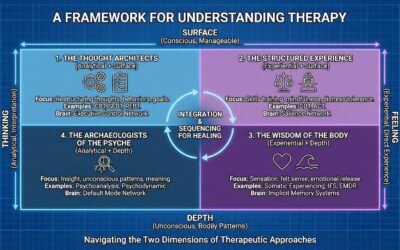


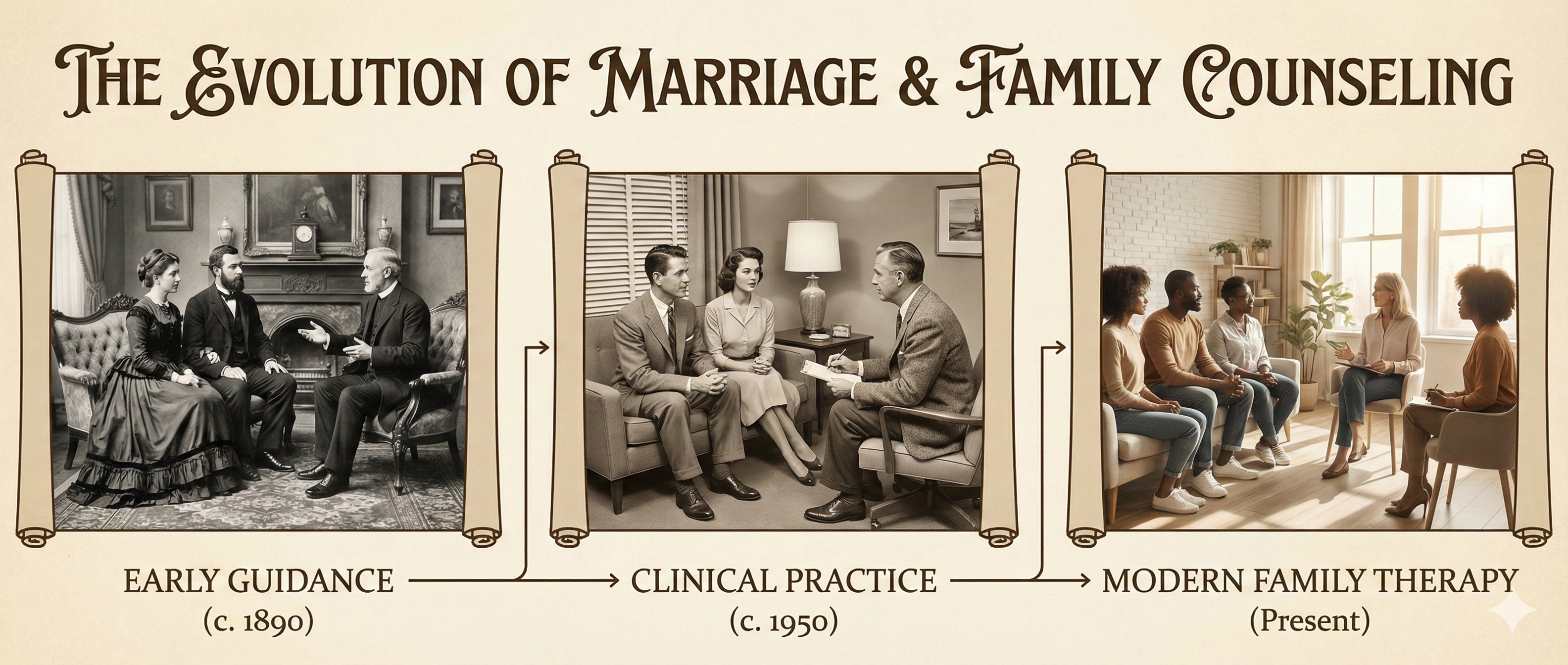


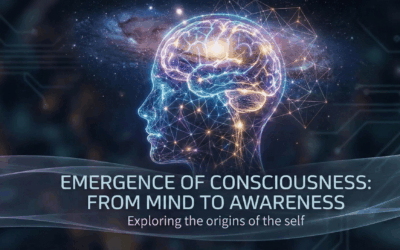


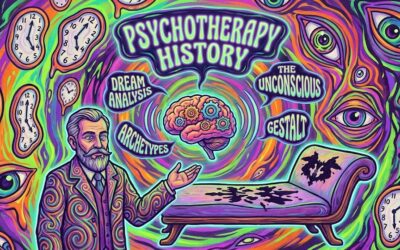










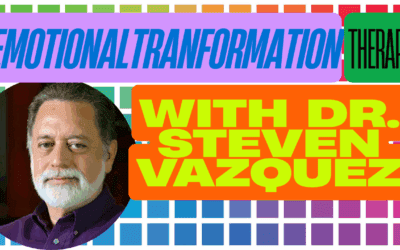



0 Comments